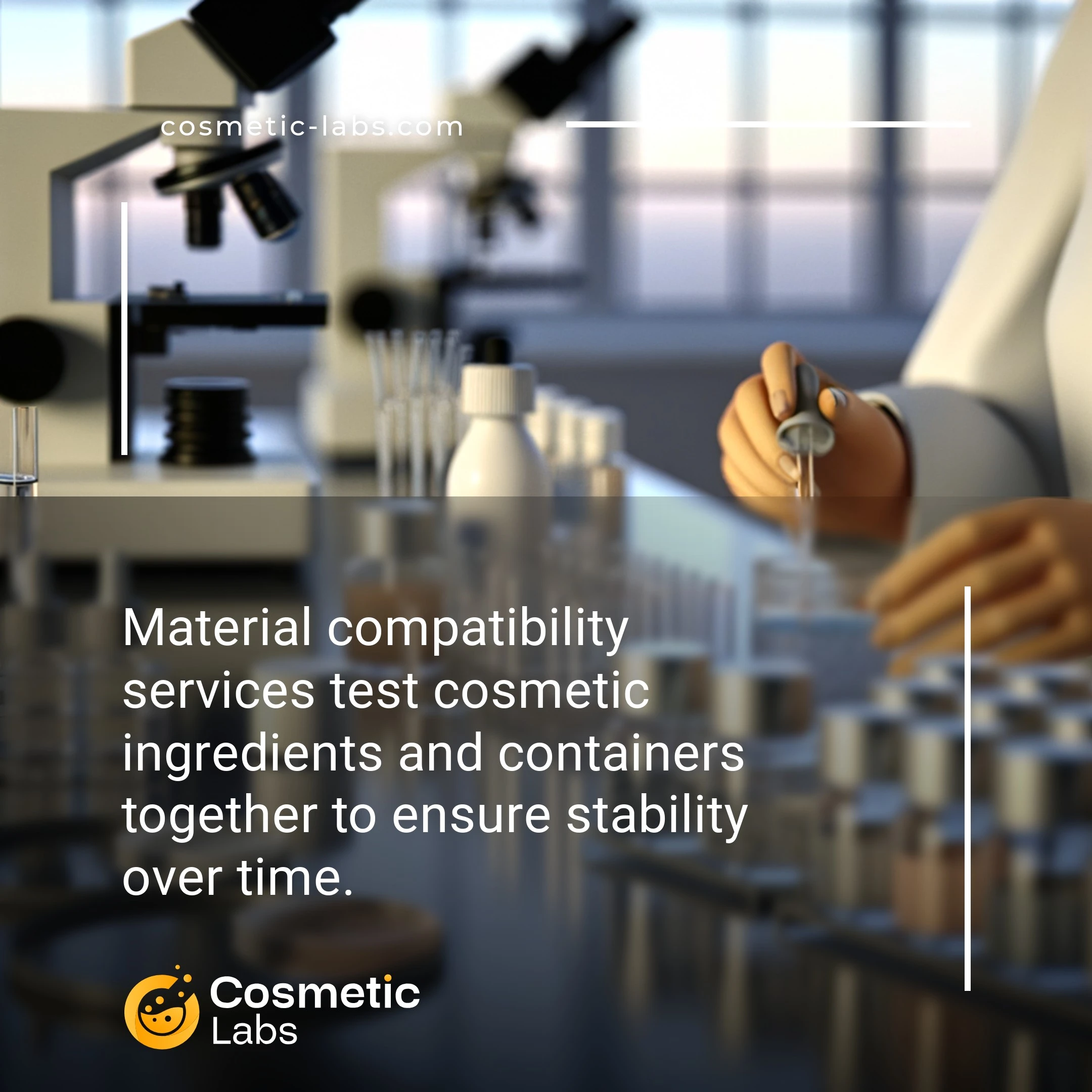Material Compatibility Services for Reliable Cosmetic Product Development

What is Material compatibility?
Material compatibility testing checks how your cosmetic formula interacts with packaging components like bottles, pumps, and caps over time. Labs test for chemical reactions, color changes, and material degradation by storing your product in different containers at various temperatures for 3-6 months. This prevents costly recalls by catching issues like plastic warping or metal corrosion before production starts.
Why do you need this service?
Cosmetic labs apply material compatibility testing to prevent your luxury face cream from separating in its glass jar or your organic serum from reacting with aluminum packaging. They test how your formulation interacts with different container materials, closures, and applicators over time—checking for discoloration, pH shifts, or texture changes that could ruin months of development work.
Who provides Material compatibility services?
All cosmetic labs providing Material compatibility services
There is no company providing these services at the moment.
Material Compatibility Testing for Cosmetic Products
Material compatibility testing determines how your cosmetic formulation interacts with packaging materials, application tools, and delivery systems. Labs on our platform test whether your product will maintain stability, color, and performance when it contacts plastics, metals, glass, or specialized materials like airless pumps and dropper assemblies.
Packaging Interaction Studies
Testing labs evaluate how formulations behave with different packaging materials over time. They place your product in various containers—PP, PET, HDPE plastics, aluminum tubes, or glass jars—and monitor for chemical reactions, color changes, or material degradation.
Common tests include:
- Stress testing at 40°C for 3-6 months
- pH monitoring to detect material leaching
- Visual inspection for discoloration or separation
- Weight loss measurements for volatile ingredients
This testing helps you select packaging that preserves product integrity and meets shelf-life requirements.
Component Compatibility Assessment
Beyond primary packaging, labs test how your formula works with dispensing components like pumps, sprayers, and applicators. Certain ingredients can corrode metal springs, cloud plastic parts, or cause rubber gaskets to swell.
Testing protocols examine:
- Pump functionality after extended contact
- Applicator tip degradation with active ingredients
- Seal integrity under temperature cycling
- Dropper bulb compatibility with oil-based serums
Results guide your selection of compatible components that maintain functionality throughout product life. Labs provide detailed reports showing which materials work best with your specific formulation, helping you avoid costly packaging failures after launch.
Real-World Applications of Material Compatibility Testing
Material compatibility testing prevents product failures before they reach consumers, saving brands thousands in reformulation costs and protecting their reputation.
Packaging Selection for Active Ingredients
Labs test how cosmetic formulations interact with packaging materials over time, checking for chemical reactions, color changes, and ingredient migration. For vitamin C serums, compatibility testing reveals whether aluminum tubes cause oxidation or if specific plastic resins leach into the formula.
Testing protocols include accelerated aging at 40°C for 3 months, freeze-thaw cycles, and light exposure studies. Results guide packaging decisions that extend shelf life by 6-12 months compared to untested combinations.
Multi-Component Product Development
When developing products with multiple phases or components—like dual-chamber serums or cushion compacts—labs evaluate interactions between different formulas and shared materials. Tests measure pH shifts, texture changes, and active ingredient stability when components contact each other during use.
This testing catches incompatibilities early, like when certain preservatives in one phase degrade actives in another, allowing reformulation before pilot production.
| Material Type | Common Incompatibilities | Testing Timeline | Success Rate |
|---|---|---|---|
| PET bottles | Essential oils, high pH formulas | 4-6 weeks | 85% |
| Aluminum tubes | Water-based acids, vitamin C | 6-8 weeks | 70% |
| Glass containers | Alkaline formulas, certain surfactants | 3-4 weeks | 95% |
| PP jars | Oil-based actives, fragrances | 4-6 weeks | 80% |
Partner with experienced labs on our platform to identify material incompatibilities before they impact your product launch.
